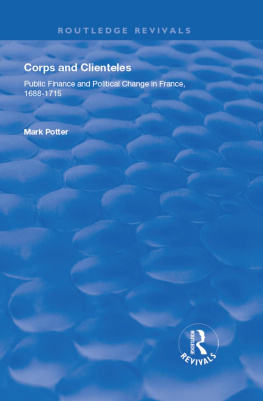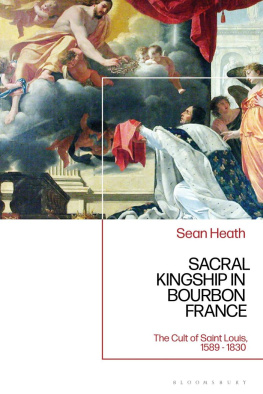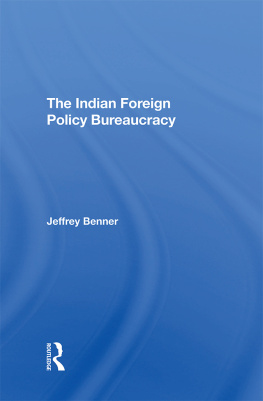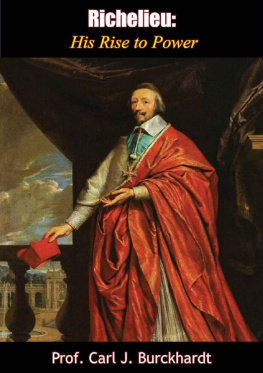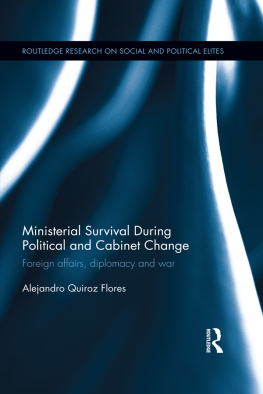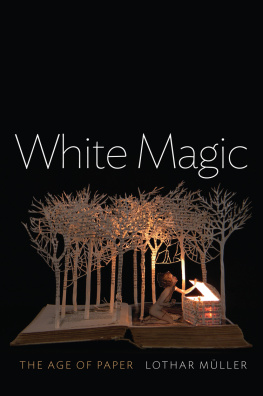A WORLD OF PAPER

Torcy in the vestments of the Order of the Holy Spirit, with a portrait of his father, Croissy. Painting by Robert Le Vrac Tournires (1701), Muse de Versailles et de Trianon. Photograph by John C. Rule.
A World of Paper
Louis XIV, Colbert de Torcy, and the Rise of the Information State
JOHN C. RULE AND BEN S. TROTTER
McGill-Queens University Press
Montreal & Kingston London Ithaca
McGill-Queens University Press 2014
ISBN 978-0-7735-4370-6 (cloth)
ISBN 978-0-7735-9214-8 (ePDF)
ISBN 978-0-7735-9215-5 (ePUB)
Legal deposit third quarter 2014
Bibliothque nationale du Qubec
Printed in Canada on acid-free paper that is 100% ancient forest free
(100% post-consumer recycled), processed chlorine free
McGill-Queens University Press acknowledges the support of the Canada Council for the Arts for our publishing program. We also acknowledge the financial support of the Government of Canada through the Canada Book Fund for our publishing activities.
Library and Archives Canada Cataloguing in Publication
Rule, John C., author
A world of paper : Louis XIV, Colbert de Torcy, and the rise of the information state / John C. Rule and Ben S. Trotter.
Includes bibliographical references and index.
Issued in print and electronic formats.
ISBN 978-0-7735-4370-6 (bound). ISBN 978-0-7735-9214-8 (ePDF). ISBN 978-0-7735-9215-5 (ePUB)
1. France History Louis XIV, 16431715. 2. Bureaucracy France History 17th century. 3. Bureaucracy France History 18th century. 4. Government information France Management History 17th century. 5. Government information France Management History 18th century. 6. Torcy, Jean-Baptiste Colbert, marquis de, 16651746. 7. Louis XIV, King of France, 16381715. 8. France. Ministre des affaires trangres Management History. 9. France. Ministre des affaires trangres Officials and employees History. 10. France Foreign relations administration History. I. Trotter, Ben S., 1949, author II. Title.
| DC126.R84 2014 | 944'.033 | C2014-900879-1
C2014-900880-5 |
Typeset by Jay Tee Graphics Ltd. in 10.5/13 Sabon
Contents
Tables
Figures
.
Preface
Sadly, after some years of illness, John C. Rule passed away on 12 January 2013. Happily, however, he knew that the book upon which he had long laboured was to be published by McGill-Queens University Press. During his final months, he drew great comfort from the knowledge that illness would not prevent the fulfilment of his lifes work and its presentation to the scholarly community and the wider public.
Since John C. Rule retired from the Ohio State University as a full professor of history in 1995, it is appropriate to remind a younger generation of his contributions to the field of early modern history and especially to the study of the reign of Louis XIV. For a number of years while in Paris working in various archives, John stayed on the left bank in the Htel des Deux Continents, aptly named in that it reflected the range of his scholarly inquiries and collaboration. Johns research also drew him to archival holdings in London and The Hague, as well as to several collections of papers housed in the United States. The publications that resulted are highly regarded by European scholars as well as by scholars on this side of the Atlantic. Johns association from the late 1950s with a group of Anglo-American diplomatic historians that included Mark A. Thomson, Ragnhild Hatton, and Andrew Lossky placed him among those who offered important revisions to the standard scholarly consensus of the neglected final decades of Louis XIVs reign as dismal and unproductive. A 1964 conference on the reign of Louis XIV held at Ohio State produced papers that, along with additional complementary articles, were published in 1969 as Louis XIV and the Craft of Kingship, edited by John, who also provided a lengthy introduction to and an extensive annotated bibliography of the reign. This volume of articles by noted scholars of the reign remains a much-cited standard work among international scholars of the Sun Kings reign. John also published important articles that examine, for instance, government reform in the reigns final decades, the functioning of the kings councils, the enduring Franco-Spanish rivalry from 1492 to 1700, the colonial policies of the Phlypeaux de Pontchartrain family of navy secretaries of state, and treaty-making on the eve of and during the War of the Spanish Succession. In particular, Johns influential publications on Jean-Baptiste Colbert de Torcy, Louis XIVs last secretary of state for foreign affairs, have illuminated important aspects of French diplomatic and administrative history during these final decades. From the 1960s, Johns archival work has brought into sharp focus Torcys bureaucratic collaborators, the pen-wielding clerks, who animated the Sun Kings diplomacy in the bureaus at the centre as it radiated out to embassies across Europe and beyond. This book marks the culmination of Johns over four decades of research and writing on this exceptional administrative apparatus and the individuals who made it function.
When Johns illness slowed his progress on his book manuscript, he invited me to complete the project. I had been his doctoral student at Ohio State in the 1970s and 1990s, researching Sbastien Le Prestre de Vauban and the development of Frances fortifications bureaucracy. My work had led me to joke with John that, as far as I was concerned, Louis XIVs reign ended in 1707, the year Vauban died. In taking up this new project, I was led into the even more intricate and densely layered world of Colbert de Torcy. With typical graciousness, John insisted from the outset that I act as his co-author. I initially balked at what I considered an excess of generosity, but I came to appreciate what John meant by it. He was entrusting to me not the editing of a largely finished product, but the completing of a manuscript that needed to be taken beyond where his illness would leave it. As I assembled, reorganized, supplemented, and rewrote his drafts in a manner faithful to his original vision for the study of this dynamic bureaucracy, we regularly talked Torcy our shorthand for these conversations that aided my labour as they raised his spirits. John oriented me to the world of Louisquatorzian diplomacy and administration that he knew so well and initially guided me in my own reading and research. I also came to draw heavily from the abundant archival notes and microfilms he had collected over the decades. These have proven invaluable for my own understanding of the administrative structures, practices, and personnel of Torcys department and for supplying a wealth of archival material to complete and extend the narrative and analysis John had originally outlined. Fortunately, my own archival research, including at the Archives des Affaires trangres in Paris, helped me navigate through and make good use of Johns extensive and meticulous research, including the many documents he had microfilmed. Through the generosity of archivists and scholars in France, I have been able to access additional archival material that has proved particularly helpful. The Internet also pointed me to a wealth of printed material largely inaccessible when John was doing his research. Search engines turned up references to Torcys clerks in books and journals where no one would have thought to look, even if they had access to them. Indeed, I can hardly imagine having completed the book without access to the Internet and its information web.



